3DPrint.com | The Voice of 3D Printing / Additive Manufacturing |
- 3D Printing for the Holidays: Celebrating Easter, Passover, & Ramadan
- Lockheed Martin Space Takes on Metal 3D Printing from Velo3D
- Cemented Carbide 3D Printing Powders from Sandvik Open up Tough Applications
- Copper and Ceramics 3D Printing Service Opens at Schunk Group
- Amazon Satellites Get Boost from Aerojet Rocketdyne’s 3D Printed Rockets
- 3D Printing News Briefs, April 14, 2022: Materials & Medical Applications
| 3D Printing for the Holidays: Celebrating Easter, Passover, & Ramadan Posted: 14 Apr 2022 12:11 PM PDT It’s a busy holiday season around the world, as Easter is this Sunday, Passover begins tomorrow, April 15th, and Ramadan started on April 2nd. As always, if you want to use 3D printing to help you celebrate, I’m here for you! To save you some time, I went to my go-to 3D printable model websites and picked a selection of 3D prints for the holidays. Minimalistic Rabbit, Cults3DFirst up, Cults3D user DAJANKA3D made this Minimalistic Rabbit when she was having trouble finding exactly what she wanted to decorate for Easter—showcasing once again the ability of 3D printing to make custom goods.
This model measures 48 × 36.2 × 85.8 mm, and can be 3D printed without any supports or infill. I especially like the shiny colors she used as well. R Stands for Rabbit – Decoration, Cults3DAnother cute Easter decoration is this R Stands for Rabbit model by Cults3D user MRMBMRMB, who also sells a wooden version on Etsy. In addition to a 3D printer, you’ll need a short M3 screw, foam rubber or something similar for the ears, an M3 insert like this one, and an optional M3 nut if your screw is too long, or you’d like your rabbit to have a longer nose. Self-Opening Easter Bunny, Cults3DThis PLA bunny “springs” to life and opens itself back up each time it’s closed, according to Cults3D user BYUCMR, which stands for Brigham Young University Compliant Mechanisms Research Group and is made up of faculty and students looking to “make an impact by creating compliant mechanism theories and applications that are novel, used by others, and make a difference for good.”
The group notes that spinnaker tape is the best option for folding, but that duct tape will also work. Star of David Card Holder, Cults3DOn to Passover, as Cults3D user HOM3D shared this simple place card holder with a Star of David cutout. It can also work double duty as a place card holder for Hanukkah dinner as well!
Easter Bunny Napkin Ring, MyMiniFactorySpeaking of holiday dinners, MyMiniFactory user Enginerd19 posted this adorable napkin ring holder for Easter. It’s in the shape of an Easter Bunny, with its nose, mouth, and eyes “all extruded out from the main body.”
Locking Egg with Key, MyMiniFactoryI think this locking Easter egg, complete with key, by MyMiniFactory user tonyyoungblood, is so cool! Perfect for a good old-fashioned Easter egg hunt, or even a geocaching expedition, this model comes in three different lock shapes—Square, Triangle, and Pentagon—with corresponding keys. Once you’ve placed the candy and keys in the eggs, lock them up with the other key and hide them, and then give participants the keys you used to lock the eggs. The goal is to find the egg that matches their key.
tonyyoungblood included detailed printing and assembly instructions, along with a YouTube demonstration: Flexi Rabbit Keychain, MyMiniFactoryIf you’re on your way to an Easter egg hunt, or just to your parents’ house for a holiday meal, you can use this adorable bunny keychain, with a hidden loop, by MyMiniFactory user mrmbmrmb for your car keys. Noting that he got the original design from Thingiverse, he included a link for the keychain he used, as well as his Etsy shop if you’d rather just purchase one instead of printing it.
No supports are needed to print this cute keychain. Ramadan Embossers Polymer Stamps, MyMiniFactoryIf you observe Ramadan and are into arts and crafts, BlanaFactory on MyMiniFactory created these 3D printable polymer stamps for clay and other hobbies just for you. Printed without supports, these embossers have cutters with a depth of 4 mm, and are meant to be used with clay.
Bunny Easter Egg Holder, ThingiverseThingiverse user Code_and_Make shared this cute bunny model for holding those little foil-wrapped chocolate Easter eggs everyone loves. You can customize the holder using OpenSCAD, as the design offers a variety of Customizer options. You won’t need a raft unless you have adhesion issues, and you should print the holder at a 0.1-0.2 mm resolution, with an infill of ~10 – 20%. It’s meant to be printed out of PLA, PETG, or ABS filament.
Peeps Bunny Figure, ThingiverseI’m one of those people who doesn’t like to eat Peeps, but I do think they’re adorable. That’s why I like these 3D printed Peeps! As Thingiverse user nerdyviews says, they are “cute and won’t rot your teeth!” Printed on a Prusa I3 MK3S with no rafts or supports, a 15% infill, and .20 mm resolution, you can print these Peeps out of brightly colored PLA; nerdyviews used Solutech. Easter Egg, Osterei, ThingiversePrinted on an Artillery Sidewinder X2, with a raft but no supports and 20% infill, Thingiverse user Thopei says this “Easter surprise provides fun for young and old.” You can add your own text to the base as well to personalize the egg.
Museum of the Future with Ramadan Theme, ThingiverseThis beautiful design by Thingiverse user Merg 1234 features a Ramadan inscription, and a moon crescent that can be hung with a small piece of wire.
Check out the YouTube video to see the design process: Assassins teapot – makos/makat dam demonstration, ThingiverseFinally, this Passover print by Thingiverse user confuded has an intimidating name but a meaningful purpose. During the Seder meal, this 3D printed teapot can be used to better explain the history to children, and demonstrate how blood (dam) and water (based off midroshim) can be poured from the same vessel.
The teapot was printed on a Creality Ender 3 Pro, with no rafts but supports for the handle and bottom of spout, 0.2 mm resolution, and 15% infill. PLA+ from eSun was used for this print, which was mostly designed using Tinkercad. Happy holidays, and as always, happy 3D printing! The post 3D Printing for the Holidays: Celebrating Easter, Passover, & Ramadan appeared first on 3DPrint.com | The Voice of 3D Printing / Additive Manufacturing. |
| Lockheed Martin Space Takes on Metal 3D Printing from Velo3D Posted: 14 Apr 2022 07:01 AM PDT One of the most financially impressive companies in the additive manufacturing (AM) sector last year was Velo3D (NYSE: VLD), which went public in October, 2021, after an SPAC merger with Jaws Spitfire Acquisition Corporation. The company's share price has been down a bit lately — but, of course, so has been the stock market in general, and especially the currently quite volatile S&P 500. On the bright side, the company has announced that one of the world's leading aerospace manufacturers, Lockheed Martin Space, recently acquired Velo3D's Sapphire XC printer. The printer is in use at Lockheed's Additive Design & Manufacturing Center, in Sunnyvale, CA. The Sapphire XC is capable of printing parts up to about two feet in diameter, and up to just under two feet in height — 500% larger than what the previous Sapphire system is capable of — and was probably the key to the company's 2021 financial performance. 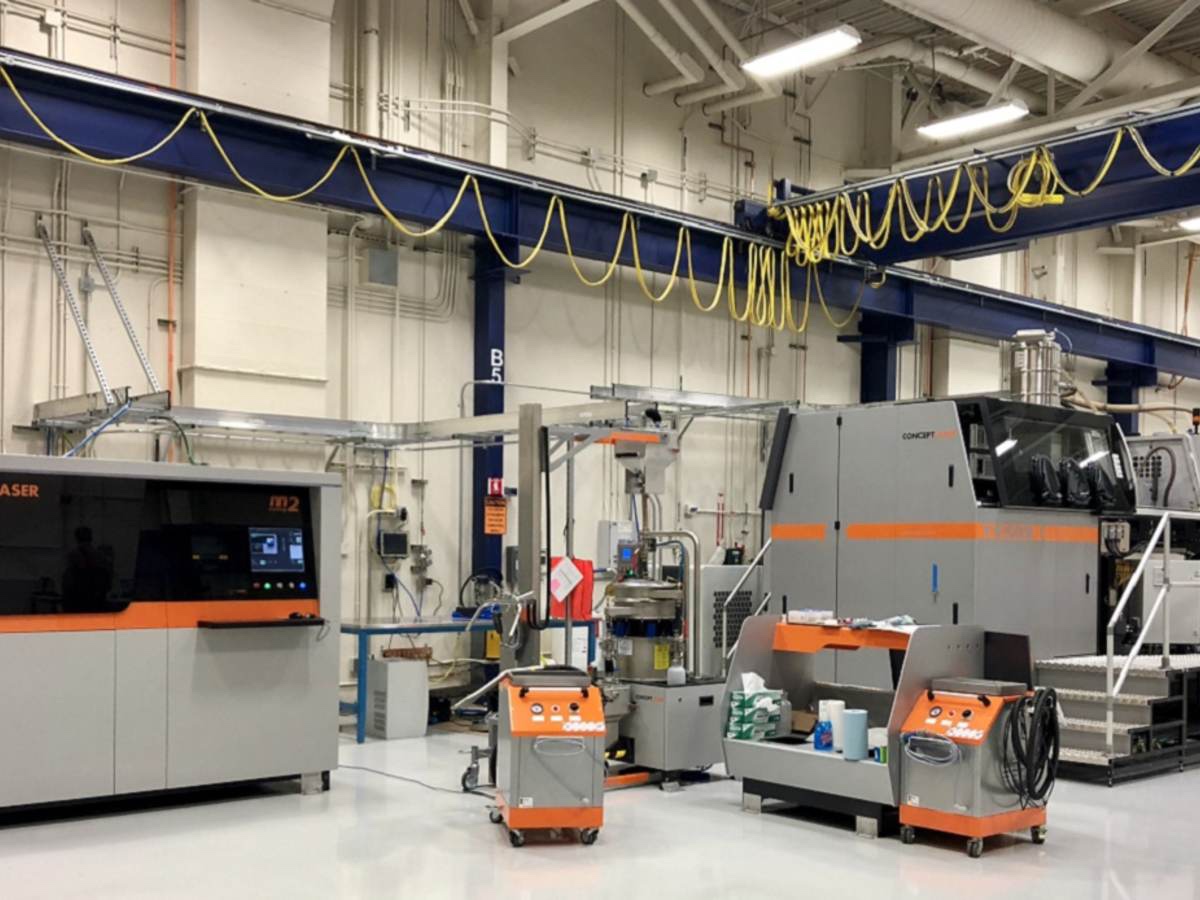 Notably, when Velo3D's customers buy the Sapphire, they aren't just purchasing printers. Rather, large industrial outfits like Lockheed are buying into Velo's "end-to-end" platform, as is becoming increasingly standard for customers in the AM sector across the board. For instance, a story I covered earlier this week highlighted the world's largest supplier of parts for wind turbines, Vestas, and its end-to-end adoption of Markforged's Digital Forge platform.  In Lockheed's case, in addition to the Sapphire XC, the company is also using Velo3D's print preparation software, Flow, and its quality assurance and control software, Assue. Moreover, all three products (the printer and the two software platforms) are integrated by Velo's Intelligent Fusion technology, which is built into all Sapphire hardware, and is the key to truly making the entire process "end-to-end". The purpose is not simply to ensure optimal repeatability and reliability for an individual printer, but to provide such an experience for customers on any Sapphire printer, anywhere in the world. As Velo3D's CEO and founder, Benny Buller, puts it, "An additive manufacturing solution that can print identical parts anywhere you have a printer can not only help solve some very specific, complex challenges in our global supply chain, it can also lower production costs and lead times, and enable the manufacturing of parts in closer proximity to where they're needed." The higher that the prices of energy sources of every kind continue to climb, alongside the growing unreliability and changing dynamics of existing global supply chains, the more likely it is that companies of all kinds, no matter the size or sector, will turn to distributed manufacturing solutions. In this sense, the firms that "got there first", when it comes to creating end-to-end platforms, will be in the best position to capitalize in the AM sector. This has been surmised by analysts in the sector for some time; 2022 may be the year when that prediction finally begins to materialize, in practice. The post Lockheed Martin Space Takes on Metal 3D Printing from Velo3D appeared first on 3DPrint.com | The Voice of 3D Printing / Additive Manufacturing. |
| Cemented Carbide 3D Printing Powders from Sandvik Open up Tough Applications Posted: 14 Apr 2022 07:00 AM PDT Swedish engineering giant Sandvik has expanded into additive manufacturing (AM) quickly. It previously bought 3T, acquired Proxera, and invested heavily in BeamIT. The company offers sintering powder but also is now supplying parts through its subsidiaries. Now, it has developed a patented process to make cemented carbide parts with 3D printing. Cemented carbide is a collection of composite materials that are usually extremely hard. Hard-wearing partes are coming into their own in tool and tooling applications, such as cutting tools, drill bits, blades, precision nozzles and the like. Anywhere where impact, abrasion, corrosion, and cutting resistance are super important, cemented carbide materials such as tungsten carbide or titanium carbide play a role. VBN already makes carbide materials for 3D printing, as does the CERATIZIT group, while Kennametal is making cemented carbide with binder jet. Now, Sandvik has developed its own proprietary process for cemented carbide powders.
Discussing the applications of the materials at Sandvik, Anders Ohlsson, Lead Product Manager at Sandvik Additive Manufacturing, says:
Internally the firm experimented with cemented carbide parts. This has included a wire drawing nib in which closed spiral coolant channels were designed to keep the element cool while protecting the wire being drawn from exposure to the liquid.
I think that this is a smart move by Sandvik. Cutting tools are a potentially very lucrative market for AM. Especially internal cooling channels or channels through which compressed air can pass could be very interesting. Imagine a complex tool that you can blow clean after each use or through which you can pump air to make it work faster with a cleaner blade. Or consider foaming nozzles that might work longer than others do. There’s the possibility of other flow components that are very wear resistant, as well. Uptake in the mining market is still quite low for 3D printing, but it could expand with cases such as this one, particularly given Sandvik’s own mining division. The oil and gas market is expanding its use of 3D printing. In that sector, these hard materials are used widely, making this a complementary development. Cemented carbide 3D printing will definitely be a burgeoning market and could considerably expand their repertoire. The post Cemented Carbide 3D Printing Powders from Sandvik Open up Tough Applications appeared first on 3DPrint.com | The Voice of 3D Printing / Additive Manufacturing. |
| Copper and Ceramics 3D Printing Service Opens at Schunk Group Posted: 14 Apr 2022 06:30 AM PDT Schunk Group is a 9,100-person ceramics, sintering, and ultrasonic welding company. Now, the German firm is expanding into additive manufacturing (AM) by offering a 3D printing service for copper and ceramics using AIM3D‘s composite extrusion method (CEM) process. 3D Printing with Metal and Ceramic PelletsCEM is a printing method resembling bound metal extrusion except in that it uses metal or ceramic pellets instead of bound metal rods or filaments. This makes for a more cost-effective and rapid production method. Building on previous experience with metal injection molding (MIM), Schunk will produce parts using AIM3D¨s ExAM 255 printer. The company will also develop pure copper, copper alloys and nickel-based materials (Inconel, Hastelloy-X) for CEM. As a service, Schunk will produce small series and perhaps even unique items that are not viable with MIM.
In addition to the usual electronics applications, the company will target applications related to “low-loss energy transmission, such as e-mobility, welding and hardening technology, as well as in the field of energy supply.” This is notable given Schunk´s experience in rail and car battery systems as well as its extensive experience in welding. I’d bet that the company has one or two internal applications for parts that have driven it to seek more scale by offering a service. This could offset costs, especially those related to further automation that would let it deploy the technology more widely. Schunk has disclosed that it has made “induction hardeners (inductors) for gear wheels in the automotive sector and for chain wheels on chainsaws”. It is also interested in “electrical contact pickups, e-motors, coils and transformer components” and “applications with good sliding properties, for example low-volume batches of plain bearings.” The firm sees more applications in “aerospace, automotive, rail and shipbuilding; parts for drive units, interior/exterior components as well as reengineering solutions, medical instruments and prosthetics, tool making, sporting goods, construction, jewelry, consumer goods and industry.”
The Market EntryThis market entry is notable for a few reasons: This is a materials and manufacturing company that has decided to skip a few steps in the value chain and focus on parts as a service. We’ve seen this before with VIctrex, doing so for its PEEK implants, and BASF, founding Replique to make spare parts. I think that this is a very astute move and will get Schunk to a position of having much more margin, control, and profitability in additive than if it would have as just one of many materials suppliers. It will also be able to produce more 3D printed automotive components at scale by reducing the costs through its service. These firms are taking a new challenge and opportunity and meeting it head on, in putting them in a more advantageous position. This is especially valuable if we perceive a further commoditization of materials and increased competition from China. Another reason this is notable is that Schunk opted to focus on copper. Copper has been a notoriously difficult thing to 3D print, with only electron beam melting (EBM), laser powder bed fusion (LPBF) and binder jet just available for a few years now. Even copper 3D printing as a service is rare. This means that Schunk is able to offer something quite novel to many players. Rather than be the umpteenth company with LPBF, it is one of few players with copper. 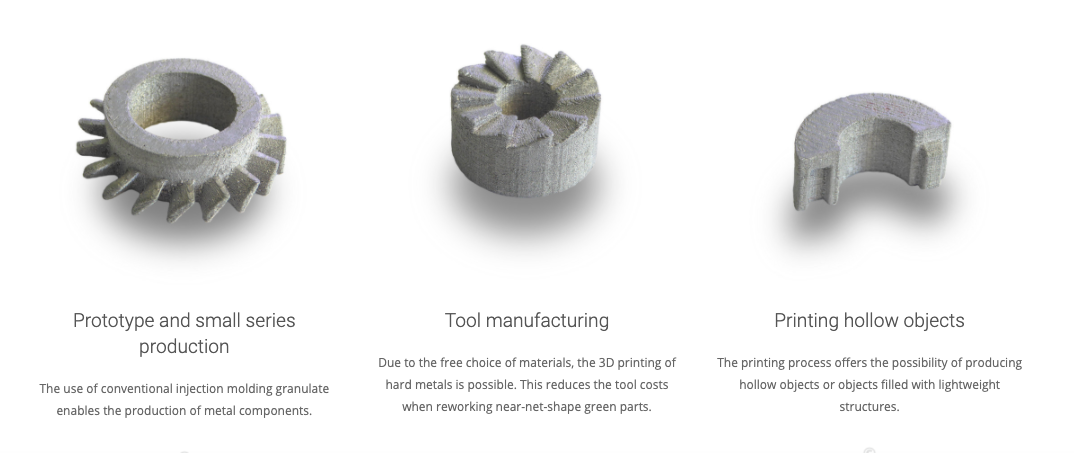 Screenshot from the AIM3D website. Another notable detail is that the company will also offer 3D printed ceramics as a service. 3D printed ceramics are currently very niche, but companies such as Steinbach and Bosch currently offer it. This could be a potentially multi-million dollar segment, if enough parties invest in making it happen. Ceramics has unmet performance for characteristics like chemical, abrasion, and temperature resistance. Complex series of ceramics components are being 3D printed, but at a small scale. Xjet and other firms offer ceramics 3D printing. Nanoe makes it much more accessible by allowing customers make some ceramics parts on FDM machines. Altogether, the market will certainly expand. Schunk is also not going to market with an established vendor. Instead, it has opted to beg big on a three-year old startup. AIM3D is not widely known or understood in an industrial setting, so this could be a big break for it. One other advantage is that the company thinks that “higher conductivity values on the surface and within the components compared to other additive manufacturing processes.” All in all an interesting and exciting development for us. The post Copper and Ceramics 3D Printing Service Opens at Schunk Group appeared first on 3DPrint.com | The Voice of 3D Printing / Additive Manufacturing. |
| Amazon Satellites Get Boost from Aerojet Rocketdyne’s 3D Printed Rockets Posted: 14 Apr 2022 06:00 AM PDT In early April 2022, American spacecraft launch service provider United Launch Alliance (ULA) signed the largest commercial launch contract in history with Amazon, promising to launch 38 Vulcan Centaur rockets supporting Amazon's ambitious Project Kuiper, an initiative to increase global broadband access through a constellation of over three thousand advanced satellites in low Earth orbit (LEO). As ULA gets ready to fulfill such a monumental task, it has decided that Aerojet Rocketdyne's engines will provide the necessary propulsion. An innovative aerospace and defense leader, Aerojet has provided propulsion and energetics to the space industry for years. Its RL10 propulsion system has been around for over half a century. The RL10C-X is the next evolution of the company's RL10 upper-stage engine and contains major components – including the injector and combustion chamber – produced with the company's industry-leading 3D printing technology. On April 11, 2022, we learned that ULA had awarded the largest RL10 contract ever to Aerojet Rocketdyne to deliver 116 RL10C-X engines for its Vulcan Centaur rockets. 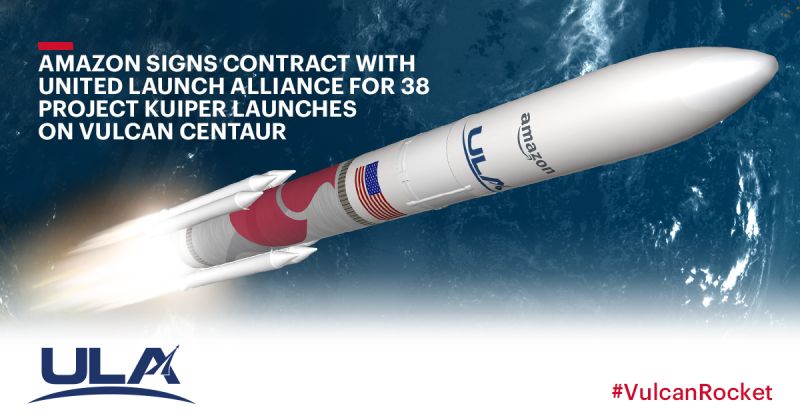 ULA's Vulcan Rocket chosen to launch majority of Amazon's Project Kuiper satellite constellation. Image courtesy of ULA.
The original RL10 engine has undergone nine major upgrades. In addition to orbiting hundreds of satellites and sending spacecraft to explore every planet in our solar system, the engine powered the DC-X vertical takeoff and landing vehicle in the 1990s and has demonstrated a deep-throttling capability for NASA down to 10 percent of rated thrust, making it ideal for the sizeable lunar lander and future Mars lander applications. Capitalizing on successful engine technologyIn 2018, Aerojet announced the development of the RL10C-X in conjunction with the U.S. Air Force and United Launch Alliance, which already had plans to use the engine to power the Centaur upper stage of its Vulcan Centaur launch vehicle. This updated version of the RL10 uses advanced technologies, primarily additive manufacturing, to lower production costs while maintaining performance and reliability. Its core is made entirely of 3D printed parts; both its main injector and combustion chamber are additively manufactured, as well as a 94-inch monolithic lightweight composite (carbon-carbon) nozzle. The RL10C-X creates thrust in 461 seconds, which puts it near the very top of the RL10 engine family in terms of performance. Following a deliberate and proven development path that began with 3D printing and testing subscale components, the development of the RL10C-X then progressed to full-scale thrust chamber testing. This was followed by the incorporation and successful testing of a new re-generatively cooled nozzle that was 3D printed from a nickel-based alloy, which led to the testing of a full-scale engine system at sea level in 2019. Designed, fabricated, and assembled at Aerojet Rocketdyne's facility in West Palm Beach, Florida, the RL10C-X demonstrated full mission capability during an altitude hot fire test series in May 2021, when the engine successfully proved it could withstand both long-duration operation and engine ignition at extreme in-flight conditions. To date, the RL10C-X development program has accumulated more than 5,000 seconds of full engine hot-fire time, and 32 starts to date. Considering that well over 500 RL10 engines have flown in space during nearly six decades of operation, the RL10C-X has neat chances of following its predecessor's footsteps. In addition, Drake pointed out that Aerojet's extensive experience building rocket engines for most of the nation's preeminent launch vehicles are a solid base for the company to continue that legacy with the RL10C-X engine. 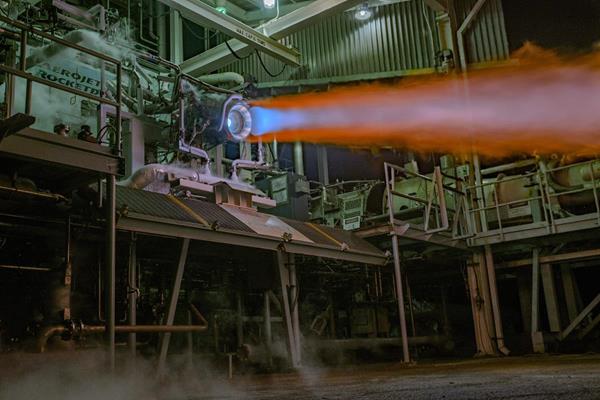 3D Printed RL10C-X Prototype Rocket Engine Soars Through Initial Round of Testing. Image courtesy of Aerojet Rocketdyne. Powering 38 upcoming launches on ULA's Vulcan Centaur rocket, which will have its first liftoff as early as this year, the RL10X-C will help carry Amazon's ambitious Project Kuiper broadband internet constellation to orbit. If all goes according to plan, then Aerojet will need to supply its engines sometime this decade since the Federal Communications Commission (FCC) license requires Amazon to launch at least half of its planned 3,236-satellite constellation by 2026. Aiming to compete with SpaceX's Starlink internet satellite constellation, Amazon signed a deal with three companies, including ULA, to secure as many as 83 launches on three types of heavy-lift rockets to put more than 1,500 satellites into LEO over the course of five years. Although it might be difficult to surpass SpaceX at this point, notably since the space giant has already deployed 1,469 Starlink satellites into orbit and is targeting a total of 30,000, it's always great to learn about more engines with 3D printed parts driving the space revolution of the next decade. The post Amazon Satellites Get Boost from Aerojet Rocketdyne’s 3D Printed Rockets appeared first on 3DPrint.com | The Voice of 3D Printing / Additive Manufacturing. |
| 3D Printing News Briefs, April 14, 2022: Materials & Medical Applications Posted: 14 Apr 2022 05:30 AM PDT We’re starting with some materials news in 3D Printing News Briefs, as Braskem has added to its filament range and ORNL has been studying a photovoltaic material. Moving on, Lumos and Luxexcel created a demonstrator of an augmented reality prescription lens solution, and DePuy Synthes has improved its ATTUNE Knee portfolio with 3D printing. Finally, Farsoon announced that its 3D printed interspinal fusion cages have received an important clearance, and that its technology has been used to increase productivity for vaping molds. Braskem Introduces Two New 3D Printing FilamentsIndustrial-scale biopolymer producer Braskem has added two new 3D printing filaments to its product portfolio, both of which can be used for multiple applications in industries like automotive, medical, and packaging. The first, glass fiber reinforced polypropylene, or FL500PP-GF, was designed for maximizing surface finish, printability, and dimensional stability, and the glass fiber makes the filament extra durable and strong. Available in black and 2.85 mm and 1.75 mm diameters, this material is good for lightweight and rigid part design, with low density and warpage and high chemical resistance. It minimizes bed adhesion issues and warpage, doesn’t require a heated chamber or drying, and is compatible with equipment like Creality and Ultimaker, with available print profiles on Ultimaker Cura Marketplace. Braskem’s other new material, FL300PE, is a 100% polyethylene filament that works for solutions which normally require traditional HDPE resins. Just like with FL500PP-GF, this one is compatible with Creality and Ultimaker equipment, with print profiles available on Ultimaker Cura Marketplace. The material is lightweight and resistant to chemicals and moisture, with low density and warpage, high dimensional stability and bed adhesion, and available in white, with 1.75 mm and 2.85 mm diameters. It was designed to be easy to print, with great surface finish and no heated chamber or drying needed. PP filaments are often hard to print, due to shrinkage and warping, but Braskem says its FL300PE was designed specifically for AM applications. You can learn more about both materials at next month’s RAPID + TCT in Detroit, at Braskem’s booth #3813. ORNL’s Multimodal Study on Photovoltaic Materials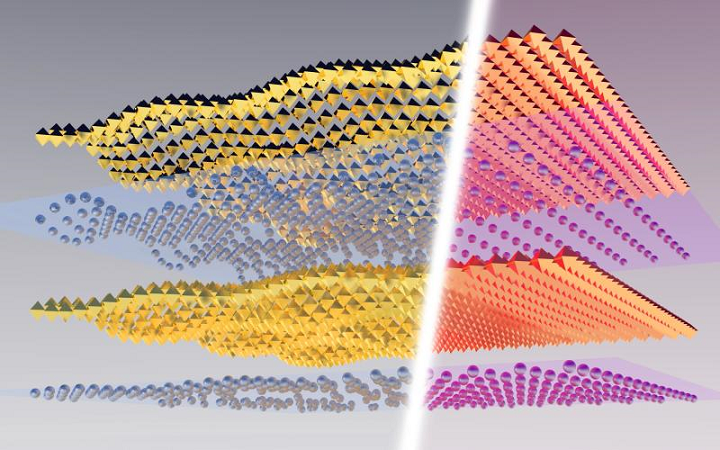 This image illustrates lattice distortion, strain, and ion distribution in metal halide perovskites, which can be induced by external stimuli such as light and heat. Credit: Stephen Jesse/ORNL A team of researchers from Oak Ridge National Laboratory (ORNL) and the University of Tennessee, Knoxville published a study on a photovoltaic material that could be promising for the future of solar batteries. Metal halide perovskites have major potential for offering light-generated energy, which is known as photovoltaic conversion and is a big deal in the search for clean, reliable power sources. Using the equipment and knowledge of ORNL’s Center for Nanophase Materials Sciences (CNMS), the multimodal study looked at the structure of this family of crystalline metals to see how it interacts with phenomena like electric polarization and ions in motion to create this energy. The material is flexible, lightweight, and doesn’t cost a lot of money, which means it could potentially be turned into a malleable, thin film for 3D printing—if the durability and efficiency can be improved, that is.
Reflective Waveguide in Prescription Lens DemonstratorTogether, 3D printed prescription lenses provider Luxexcel and Lumus, which creates reflective waveguide displays for Augmented Reality (AR), made an AR prescription lens solution demonstrator. It features a prescription lens with an embedded Lumus Maximus reflective waveguide, which has a 12 x 12 mm eyebox, 50° field-of-view, 2K x 2K resolution, and over 4,000nit/WLED brightness. This waveguide is good for outdoor use, and stays flat during the prescription lens 3D printing, which allows for clear, high-quality images that can be viewed through the demonstrator’s prescription lens; additionally, features like air gaps can be added during 3D printing. The technologies on display in this proof of concept can be scaled to 3D print smart eyewear with individualized prescriptions and thin, durable lenses.
Two New Elements Added to ATTUNE Knee Portfolio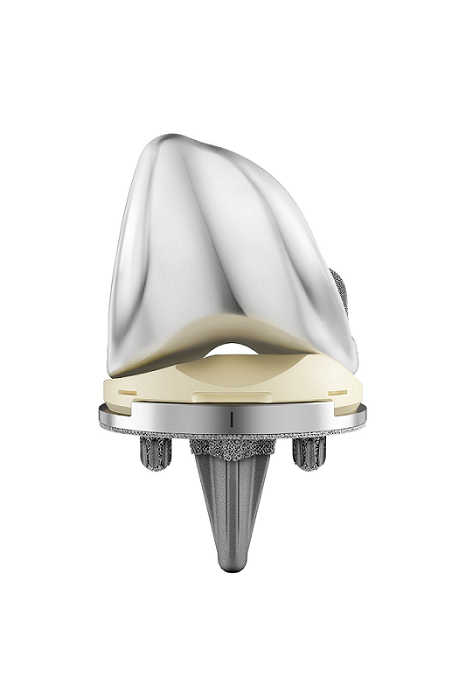 The ATTUNE Cementless Fixed Bearing Knee Construct with the AFFIXIUM 3DP Technology and ATTUNE Johnson & Johnson MedTech announced that its orthopaedics company DePuy Synthes has added both the ATTUNE Cementless Fixed Bearing Knee with AFFIXIUM 3DP Technology, and the ATTUNE Medial Stabilized Knee System, to its ATTUNE Knee portfolio in order to offer more natural knee function to Total Knee Arthroplasty (TKA) patients. The first is a 3D printed cementless knee designed for more active patients whose lifestyles benefit from biological fixation. The advanced 3D printing technology creates a lattice structure with a porosity akin to natural bone, which can improve the initial stability of the implant. The ATTUNE Medial Stabilized Knee System uses a TruARC Lateral Path for natural knee function and asymmetric anatomic inserts with a raised medial lip for stability. Both innovations, with improved kinematic features, work with the VELYS Robotic-Assisted Solution.
Farsoon 3D Printing Interspinal Fusion Cages & Vaping Molds NMPA-approved Porous Titanium Interspinal Fusion Cages 3D printed by Farsoon metal 3D printers. Image courtesy of Huaxiang Group. Finally, Farsoon‘s 3D printing technology was recently used for two interesting but different applications. First, medical 3D printing solutions provider Huaxiang Group announced that its Porous Titanium Interspinal Fusion Cages, 3D printed on Farsoon’s metal systems, had received category 3 medical device clearance from China's National Medical Products Administration (NMPA). The patented cage can be customized for specific patients, including features such as elastic modulus, pore size, and porosity, in order to promote bone growth. The Porous Titanium Interspinal Fusion cage’s mechanical properties, size accuracy, and surface quality meet the top standards for interspinal implants. In a case study, Farsoon detailed how Borton Precision Technology Co., Ltd. used its FS273M dual-laser metal system to print more sophisticated molds for electronic vaping devices, which have a complex internal structure. The printer was specifically used to fabricate next-generation vaping mold inserts featuring conformal cooling channels with a smoother internal surface area, which allowed Borton to achieve a faster, more uniform heat removal process, thus increasing its production efficiency by 60%. Because the production process uses CNC machining as well as metal AM, Farsoon also worked with Borton to create an automatic alignment solution for hybrid printing, complete with an optimized visual analysis layout and high-resolution, in-chamber cameras. The post 3D Printing News Briefs, April 14, 2022: Materials & Medical Applications appeared first on 3DPrint.com | The Voice of 3D Printing / Additive Manufacturing. |
| You are subscribed to email updates from 3DPrint.com | The Voice of 3D Printing / Additive Manufacturing. To stop receiving these emails, you may unsubscribe now. | Email delivery powered by Google |
| Google, 1600 Amphitheatre Parkway, Mountain View, CA 94043, United States | |
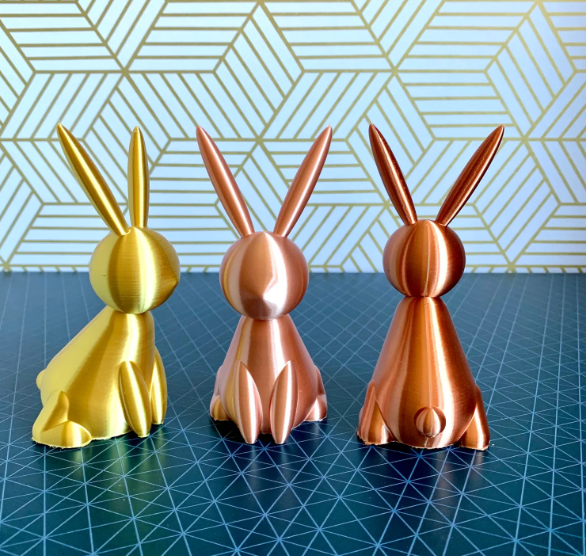
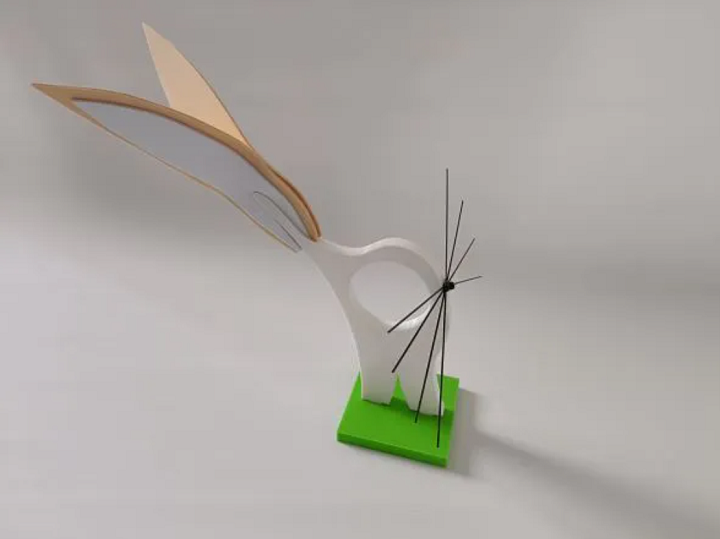
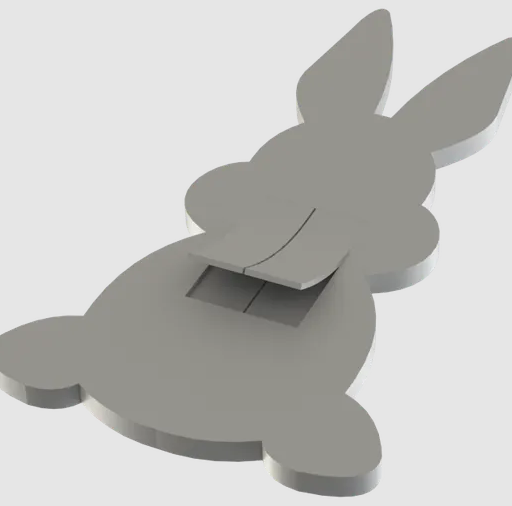
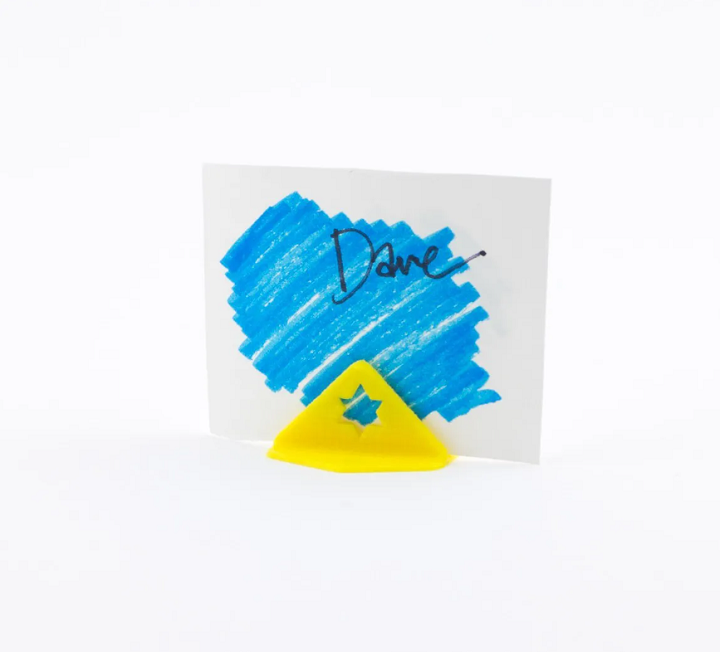
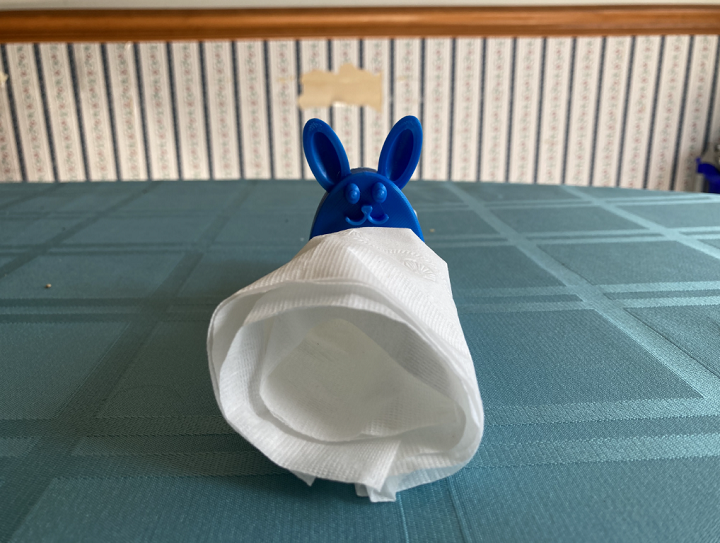
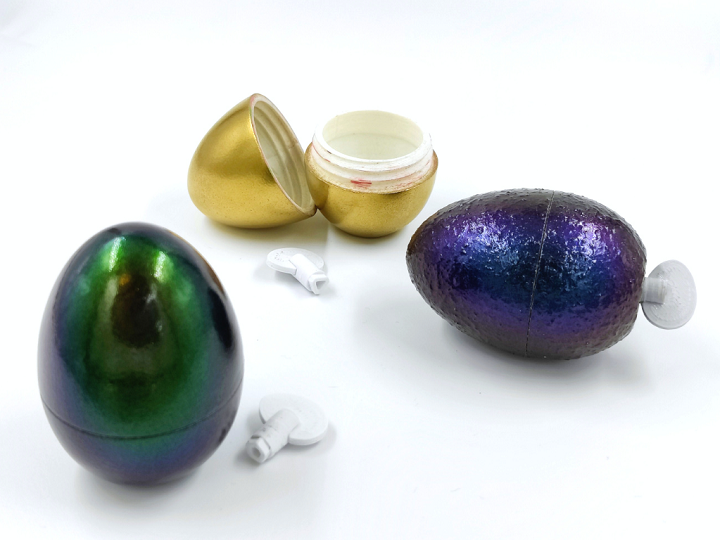
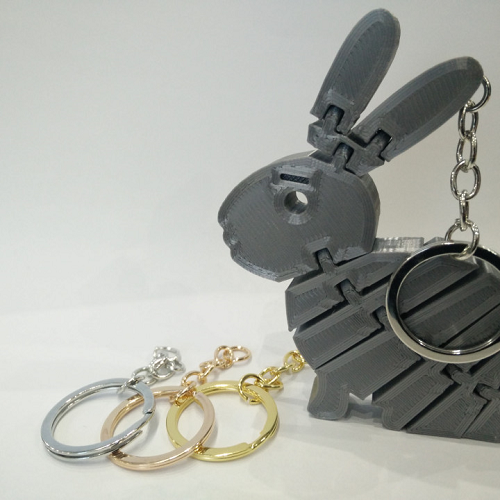
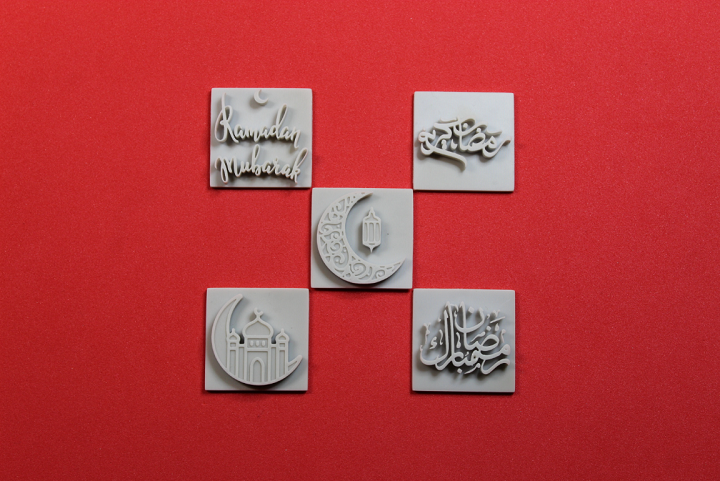
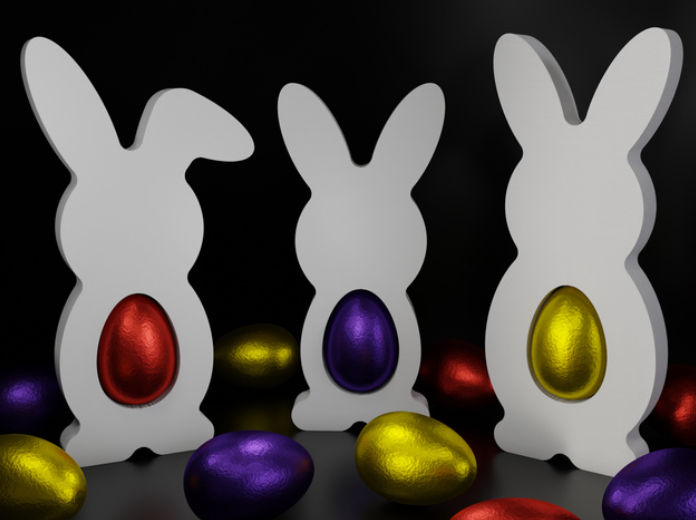
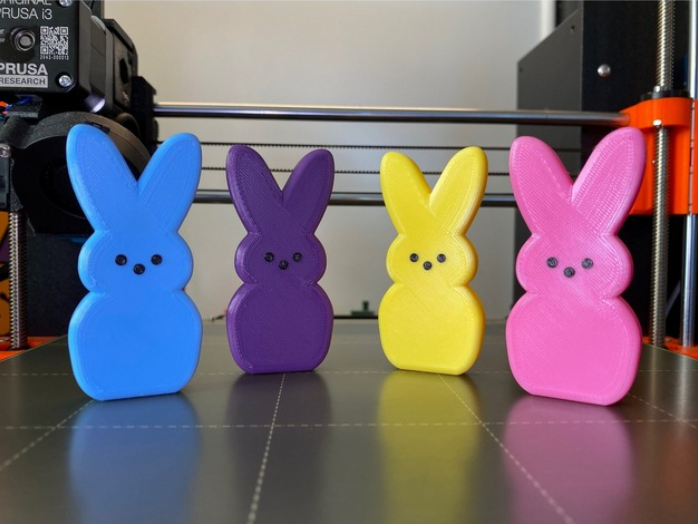

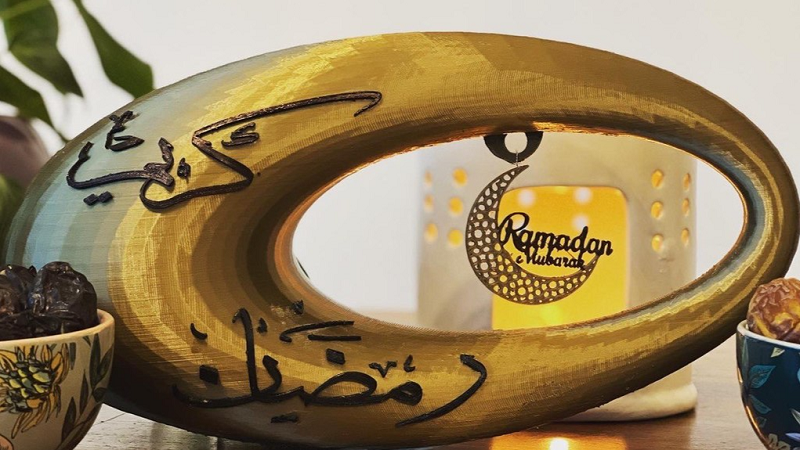
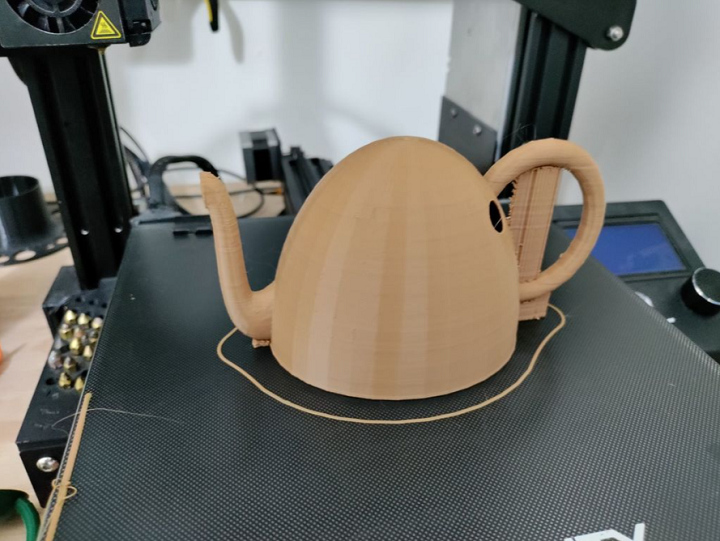




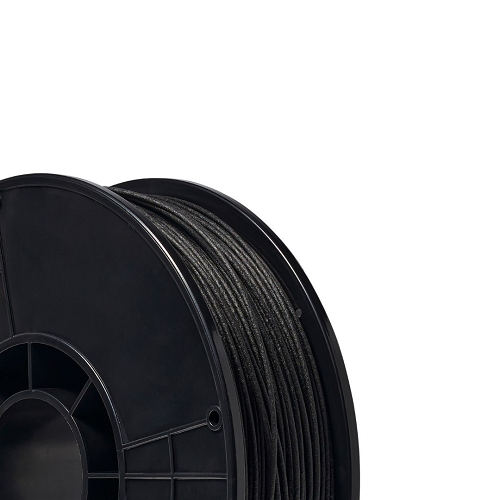
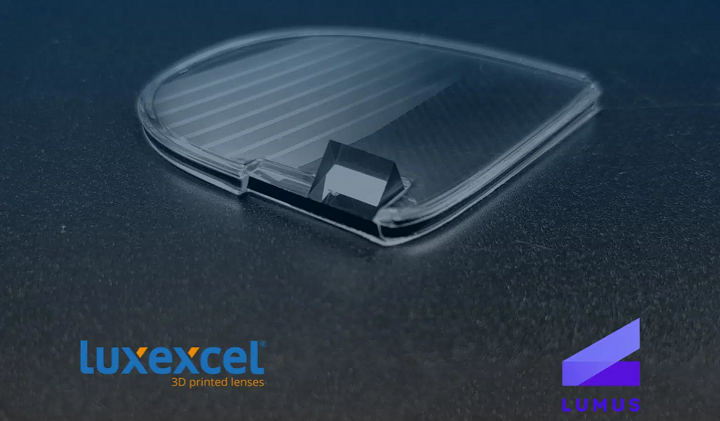
 Medial Stabilized Knee System
Medial Stabilized Knee System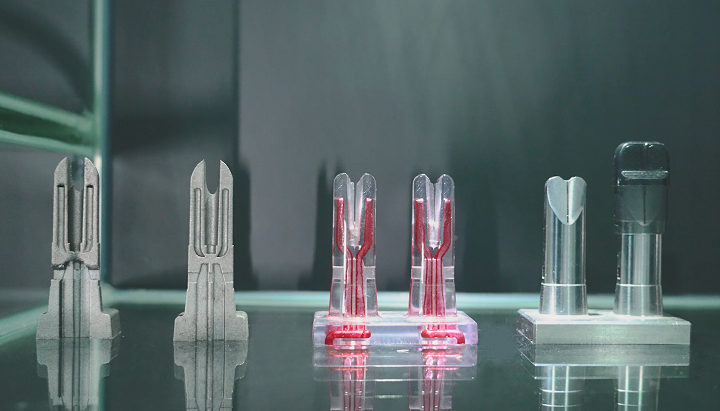

0 comments:
Post a Comment